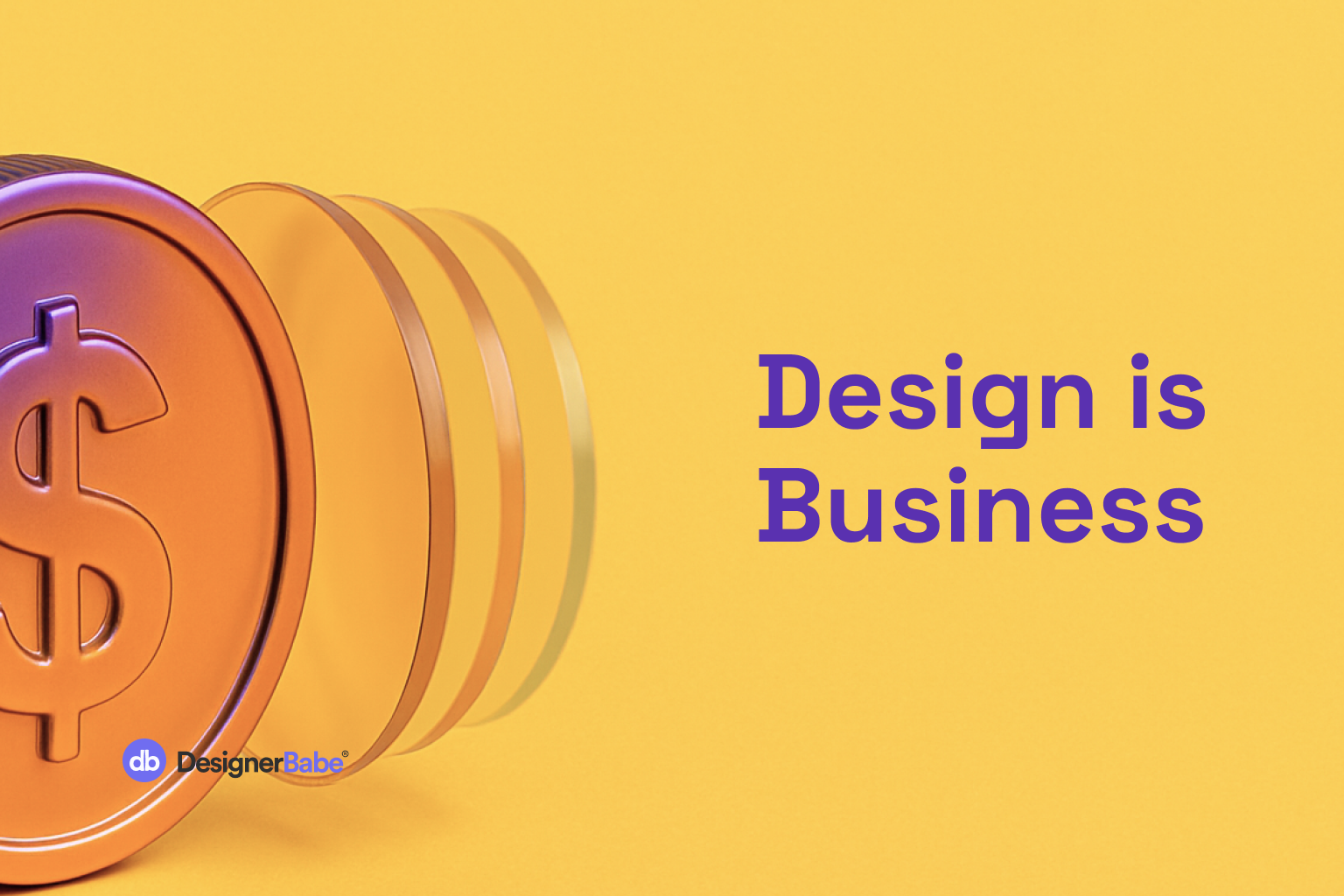Design is Business
By Mitchelle Chibundu
5 MIN READOCT 21, 2025For years, design and business have been treated as two distinct languages: one emotional, the other financial. The simple fact is that design is business. Every colour, flow, and feature is a business decision disguised as creativity. Every layout determines how trust moves and how value is perceived.
Design is how people understand business and make sense of it.
The false divide
Somewhere along the way, we built a wall between creativity and commerce. Designers were told to make things attractive, while others made them profitable. That division resulted in a generation of designers preoccupied with pixels and founders obsessed with profit, both forgetting that clarity creates beauty and growth.
“Aesthetics capture attention, but design sustains value. When users drop off or products feel inconsistent, it’s not only a design flaw; it’s lost trust and revenue.”
The conditioning that withholds designers
Designers and entrepreneurs share the same DNA: both turn uncertainty into outcomes. Yet many designers were trained to serve rather than steer, to interpret vision instead of define it, and to polish outcomes instead of owning them.
This mindset creates brilliant executors but hesitant decision-makers.
Even at senior levels, many designers find themselves waiting for instruction. Titles change, but the dynamics rarely do because they’re still expected to respond, not to define. Product managers decide what to build, while designers are called in to make it usable or beautiful, which quietly erodes creative leadership.
Ownership begins when you stop asking, “What do you need?” and start asking, “What are we trying to achieve?”. That single shift from request to result is how designers evolve from decorators to drivers.
True leadership in design is proactive, not reactive. It’s asking the hard questions before the brief arrives: Why this? Why now? What outcome are we shaping?
“When you anchor design in purpose and measurable impact, you stop following the roadmap and start shaping it.”
Design is the language of value
Design makes value visible. It’s how people see trust, feel quality, and decide what deserves their attention. People don’t pay for design because it looks good. They pay because it works.
The best businesses view design as an investment, not an expense. Every decision that lowers friction, builds trust, or improves usability compounds over time. Design reduces support costs, improves retention, and establishes a reputation that outlasts marketing campaigns. Great design not only generates profits, but it also sustains them.
The best designers already think like founders; they just don’t call it that. They allocate resources, optimise experiences, and influence profit through clarity, usefulness, and consistency.
When you understand how design raises revenue, lowers friction, and boosts retention, you stop being a cost centre and start becoming a strategic advantage.
“Designers who speak the language of money do not lose influence; instead, they multiply it.”
When design meets emotion
The most successful companies trade on emotion. Apple sells clarity. Airbnb sells belonging. Hourze sells fulfilment. These outcomes aren’t accidental; they’re the result of design that understands human economics.
When emotion and logic meet, products move beyond usability and into loyalty. People don’t just buy what works; they buy what means something. Great design turns that meaning into measurable results.
Final thoughts
Every decision in a business, from how a message is framed to how an error is explained, is a design choice with financial consequences. Clarity, trust, and growth are no longer separate goals. They are the same system, seen through different lenses.
Design is how ideas become real. It’s not a business accessory; it is the business. Those who understand that won’t just make better products, they’ll build better companies.
If you lead a creative, product, or innovation team and want to align design with measurable business outcomes, book a free session.
- Mitchelle
About Mitchelle Chibundu
Mitchelle Chibundu is the Award-winning Founder and CEO of Designer Babe®, a multidisciplinary creative and education company shaping the future of design, technology, and culture.
As a seasoned product designer, educator, author and entrepreneur with over a decade of experience, Mitchelle has designed and led global initiatives across fintech, media, and education. Her work spans top organisations, including Flutterwave, Wise, and Ledger, where she helped build trusted financial experiences used by millions worldwide.
Mitchelle is widely recognised for her ability to merge clarity, creativity, and business strategy, helping professionals and teams communicate their value and lead with precision. Through her books, lectures, and workshops under Designer Babe®, she has inspired thousands of creatives worldwide to merge storytelling, design, and strategy in pursuit of purposeful work.
About Designer Babe®
Designer Babe® is a global creative education and media platform that helps designers, universities, and organisations turn creative skills into measurable impact.
Through lectures, workshops, publications, and cultural programming, Designer Babe® equips individuals and teams with the tools to think clearly, communicate confidently, and design fulfilling careers. The company partners with universities, fintech organisations, and creative institutions to bridge the gap between creativity, business, and leadership.
What began as a design community has evolved into a trusted ecosystem, partnering with universities, global brands, and tech organisations to make creative ownership accessible to everyone.

